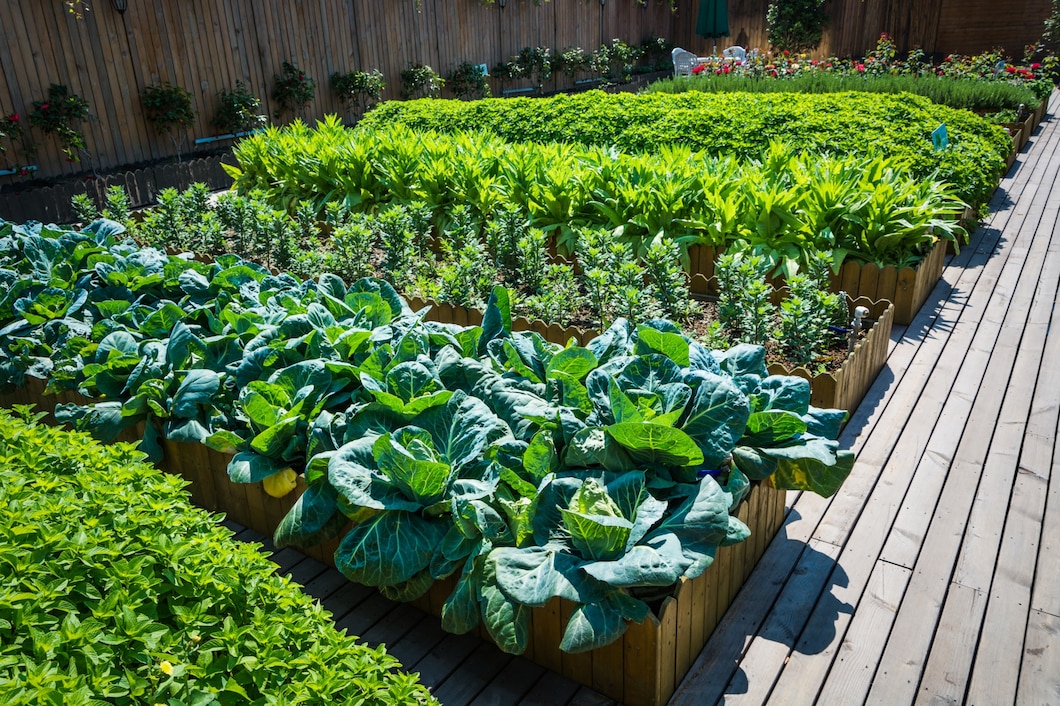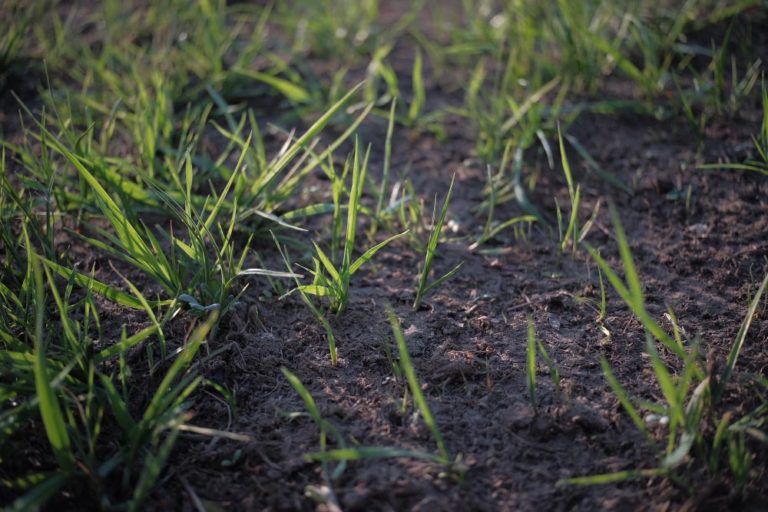Raised Bed Gardening 101: Everything You Should Know About a Raised Bed Garden
Gardening is one of the most rewarding and relaxing activities. Planting seeds, caring for them, and seeing them grow into beautiful plants and trees is a wholesome experience. Not to forget that you enjoy home-grown, natural, and fresh fruits and vegetables daily.
This is one of the reasons why almost 55% of Americans have gardens in their homes and enjoy gardening activities. However, many people who enjoy gardening often cannot engage in the activity due to a lack of time or adequate space. And this is where a raised bed garden comes into the picture!
Raised bed gardening has been one of the most preferred types of gardening for years. However, many people are realizing the benefits of raised bed gardens and are trying to build one for themselves for the first time. If you are one of them, you have reached the right place.
This article will explore everything related to raised bed gardening and how you can set up your first-ever raised bed garden easily. Read on!
What Exactly is Raised Bed Gardening, and What are its Benefits?
In raised bed gardening, the planting bed is placed slightly above the ground. It is enclosed in a box-like frame from all four sides. These frames can be made of wood, concrete, or any other sturdy material.
A raised bed garden is quite simply a freestanding garden that contains the soil and compost. This type of gardening is perfect for people who don’t have the required time, space, proper soil, or equipment to maintain full-fledged in-house gardens. It is a shortcut method of growing and harvesting fresh fruits and vegetables in limited space and time.
Here are some fantastic benefits of having a raised bed garden in your home:
1. It allows you to grow more plants in less space
This is one of the biggest benefits of having a raised bed garden. Since plants are set closer together in a raised bed garden, you can easily grow more plants in lesser space.
Raised bed gardening is a fantastic small-space gardening method that ensures that every single square inch of space of your raised bed is optimally used.
2. Grow plants anywhere you want!
Another huge benefit of this gardening method is that you can grow plants anywhere you want. Don’t have a proper garden? No problem! A raised bed garden can be placed anywhere in your house.
You can set it up in your entryway and spruce up its overall aesthetics, place it in your backyard, or grow fresh fruits and veggies in your front yard. The options are endless!
3. You can grow plants irrespective of the soil condition around you
Many people fail to have a productive garden due to the poor soil condition around the area they live. Fortunately, a raised bed garden can help eliminate this problem effectively.
As you can put your own high-quality solid and compost blend inside the raised bed structure, the soil quality on your site doesn’t affect your garden. So you can still harvest and enjoy fresh vegetables and fruits without any issues.
4. Little to no room for weeds
Weeds are a nightmare for every gardener. Every time you pull them out, they seem to come back faster and stronger. The good news is you won’t have it deal with intense weed issues with a raised bed garden.
Since a raised bed garden is compact and plants are placed pretty close together, weeds don’t have much room to grow. And even if they do find some space, there will be much fewer weeds, and you can easily pull them out from the loose soil.
5. No need to bend down
If you have some health-related issues where bending down for longer isn’t possible, then raised bed gardening will be the perfect option. There are a number of raised beds that are placed at an elevated level. So, you can easily plant the seeds and tend to them without the need to bend down.
Getting Started With Raised Bed Gardening
Now that we have discussed what a raised bed garden is and its amazing benefits, let’s see how you can set up your first ever raised bed garden.
1. Choosing the right raised bed
Your raised bed gardening journey starts with choosing the right raised bed. There are a variety of raised bed gardens in the market. You can find raised bed gardening kits that you can customize by yourself as well as full-fledged pre-built raised beds.
Raised beds come in different materials, designs, and sizes. The most popular materials include galvanized steel, recycled plastic, and everyone’s all-time favorite – wood. If you want to avoid bending, consider buying elevated raised bed gardens.
The size of your raised bed will largely depend on the availability of space, the kind of plant you want to grow, and the condition and quantity of the soil. Generally, the size of a raised bed garden starts from 6 inches. However, if you want to grow vegetables like potatoes, carrots, etc., a depth of 10 to 12 inches is ideal.
The deeper your raised beds are, the more soil you will have to use. Moreover, greater depth also allows the roots of the plants to grow freely; thus, they thrive well and remain healthy.
2. Planning the placement
When it comes to the placement of your raised bed garden, remember that full sunlight for at least six to eight hours a day is essential. While you do not need a lot of space to set up a raised bed garden, you need to choose a place where your plants will get plenty of sunlight for their good and continued growth.
So, go through your property, and choose the sunniest area for the placement of your raised bed garden. Further, ensure to avoid low and wet areas. Doing so will enable you to easily access the hose and water your garden.
Additionally, before you decide on a permanent place for your raised bed garden, ensure the spot is free from perennial weeds. Clear out all the grass and loosen the soil with the help of a shovel. Doing so is recommended to improve the drainage and moisture retention ability of the raised bed garden.
3. Understanding the soil requirement
One of the most crucial parts of raised bed gardening is ascertaining the ideal soil mix and quantity. The deeper your raised beds are, the more soil you will need. So, make sure to assess the depth of the beds carefully.
If you have decided to keep multiple raised beds to grow almost all kinds of vegetables for your kitchen, consider buying soil in bulk, as it will make the job easier.
Soil is the most crucial ingredient of your raised bed garden. It can single-handedly improve the quality of your yield or ruin it completely. As we said above, the biggest benefit of having a raised bed garden is using the soil blend of your choice.
The type of soil mix you should go for largely depends upon the kind of plants you are growing. However, if you want a general idea, a soil blend comprising 70% garden soil or topsoil and 30% organic compost will be ideal for most raised bed gardens. It will help your plants get all the required nutrients and boost their productivity. See our guide about the Best Mulch for a Vegetable Garden.
4. Deciding what to plant
Now here comes the most important and also quite confusing decision about your raised bed garden – what should you actually plant? Now, there are a variety of plants that can grow really well in a resided bed garden.
While most people prefer these gardens for growing fresh veggies, you can also plant your favorite blooms of the season. If you want to grow flowers in your raised beds, consider going for blooms like marigolds, sunflowers, petunias, poppies, and more. These flowers look absolutely stunning and flourish quite well in raised beds.
Note: If you are planting poppies, remember that they require full sunlight to grow properly. So, make sure to keep the raised bed in the sunniest spot in your backyard.
As we mentioned, most people opt for a raised bed garden for growing all kinds of vegetables. So, if you are a fan of home-grown fresh veggies (who isn’t?), plant the ones you love eating the most. You can go for leafy greens like lettuce, spinach, and other herbs. Chilli, garlic, tomato, carrots, bell peppers, and potatoes are also the top favorite choices of most raised bed gardeners.
Along with them, try planning some new veggies every now and then. It will enhance the taste of your food, and you will get the experience of growing something new.
Here are some tips that you should remember while growing different plants in your raised bed garden:
- If you live in a colder region where the growing and harvesting season is short, consider plating plants instead of seeds. This will reduce the growing time of your yield, and they will mature before the frost or snow arrives.
- Corn, tomatoes, and peppers should only be planted once during each growing season. On the other hand, you can easily replant root crops and leafy salad greens for a second harvest.
- Once you have planted the seeds, make sure to water the areas thoroughly. The soil should always have the right amount of moisture for the plants to thrive properly. In case you leave the soil too dry or put loads of water into the beds, it can ruin your entire crops.
5. Watering and tending your plants
Once you are done with everything and planted the seeds in your raised bed garden, it’s time to work out a tending and watering plan for it. Watering plays a crucial role in determining the overall growth rate and health of your plants. Thus, you must ensure sufficient water for your raised bed garden.
Your raised bed garden must be watered properly to a depth of a few inches. When you have just planted the seeds, make sure not to let the soil get dry, as it can hinder the germination process.
Here’s a quick trick to check whether or not your raised bed garden has enough moisture. Simply put your index finger into the soil, to the root area. If it feels damp, it’s a sign that your garden has plenty of water.
An excellent way to keep the soil moist at all times is by covering the newly planted garden area with shade netting or garden fabric. Then, once your seedlings are a bit grown, you can take off the cloth or netting and let your plants thrive in nature.
One of the major parts of tending to your raised bed garden is weeding. Weeds negatively affect the growth of your vegetables by competing with them for space and moisture. Thus, it is necessary to remove the weeds regularly. During the spring season, you must remove weeds from the raised bed gardens almost once or twice a week.
Further, make sure to provide water-soluble fertilizer – containing seaweed and humic acid – at least once a month. These fertilizers are a fantastic source of nutrition for your raised bed gardens and keep them healthy and free from common diseases. So, you will get to enjoy fresh home-grown vegetables every day.
Final Thoughts
So there you have it – everything you should know about raised bed gardening!
Creating and tending to a raised bed garden can be highly rewarding if you know how to do it right. And by implementing the tips mentioned above, you will be able to do it right! It will not only enhance the overall appeal of your home but also gives you something relaxing and productive to do.
So, what are you waiting for? Gather all the essential supplies, decide what plants you want to grow, prepare the ideal soil blend, and get down to work. Your very first raised bed garden awaits!
Related Posts:







